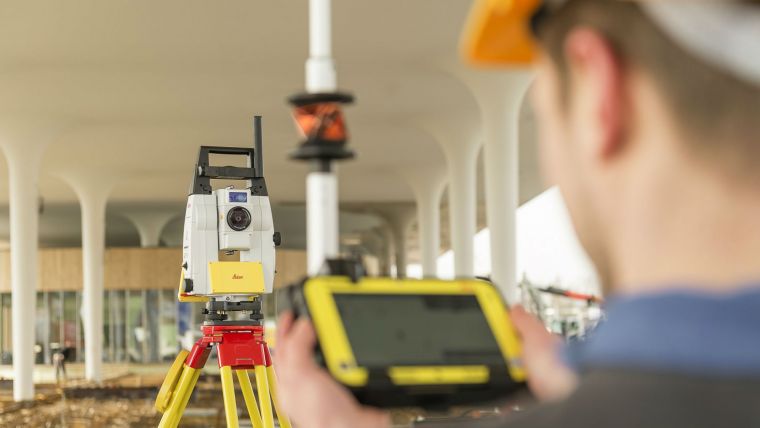5 Benefits of Digital Transformation in Construction
There have been many changes in the AEC industry over the past two decades. Here, Matt Wheelis examines five benefits resulting from today's digital transformation.
Matt Wheelis has spent his entire 20-plus year career in the construction industry – most of it related to bringing technology to architecture, engineering and construction (AEC) professionals. From using a plumb bob and string line for construction surveys to clients now requesting point clouds for as-built comparisons, there have been lots of changes over the years. Here, he examines five benefits resulting from today's digital transformation.
Today, though, the construction industry is experiencing a rate of transformation as I’ve never witnessed before. Digital technologies have rapidly transformed construction sites. Construction professionals can now have real-time intelligence about quality and quantity of progress derived from information captured by sensors, such as cameras and laser scanners, as compared to the 3D model of the intended result. We are eliminating waste in the field by ensuring that each crew has exactly the right information, materials and equipment required for the task on a lean, just-in-time basis.
Building Information Modelling (BIM) has been the catalyst to move the industry toward this new era of transformation, accelerated by cloud and mobile access to information, and processing capabilities moved to the point of work with edge computing. Building construction professionals are now more than just the builders – they have become “renaissance professionals” combining knowledge of construction means and methods with technical capabilities to survey, detail and validate.
A new focus
This digital transformation has enabled a renewed focus in the industry on what’s most important – high-quality work, safely done. Due in part to these technologies, we are becoming better professionals, bringing more value to our customers: “on time and within budget” is table stakes. This new focus on quality and safety, though, doesn’t come alone. Here are five benefits I’ve witnessed from digital transformation in construction:
1. Improved productivity
When crews can first understand design in the office and bring them to life in construction in the field, we see productivity go up. No more repeated back and forth between the plans and what is actually taking place on site. With digital designs that can be referenced right there on site, crews experience productivity gains and stay on track and budget. At scale, this productivity leads to incredible gains - according to the World Economic Forum report Shaping the Future of Construction – A Landscape in Transformation: An Introduction, a 1% decrease in global construction costs would save society $100 billion globally.
2. Safer operations
With digital design and construction, there is a drastically reduced need for crews to enter dangerous situations to obtain hard-to-reach information. With this use of sensors, such as laser scanners or laser distance meters, crews can easily capture information while their feet stay on the ground.
3. Higher accuracy
When using digital technologies, construction professionals can more accurately capture information and implement that knowledge into project plans and construction. For example, a point cloud captured by a laser scanner provides infinitely more detail than a 2D paper blueprint for as-built checks. Similarly, robotic total stations fed with BIM data can let one person set out construction work with far more precision than available with a tape measure and a multi-person crew.
4. Better communication
In a recent survey of construction leaders, they agreed 48% of rework was caused by miscommunication. The use of cloud-connected mobile apps has become the norm and is accepted on most projects in the field. This enables communication to be accessible and clear – and with integration to equipment for digital layout and reality capture, the connection to the “real world” is complete and transparent.
5. More innovation
Until very recently, innovation was not considered a core competency of a construction firm. In fact, spending on innovation was often seen as wasteful, and targeted for reduction. With the rapid adoption of digital technologies on the construction site, a virtuous cycle has begun, whereby innovation is becoming a core differentiator, fueling additional adoption and investment.
Digital transformation in construction is not a prediction nor a far-off concept; it’s happening now. Though there may be somewhat of a learning curve, it’s time for the construction industry to reap the rewards from this new era. How do you see digital transformation taking hold and impacting your business?
Matt Wheelis is director of global business development for building construction at Leica Geosystems, part of Hexagon.

Value staying current with geomatics?
Stay on the map with our expertly curated newsletters.
We provide educational insights, industry updates, and inspiring stories to help you learn, grow, and reach your full potential in your field. Don't miss out - subscribe today and ensure you're always informed, educated, and inspired.
Choose your newsletter(s)
























